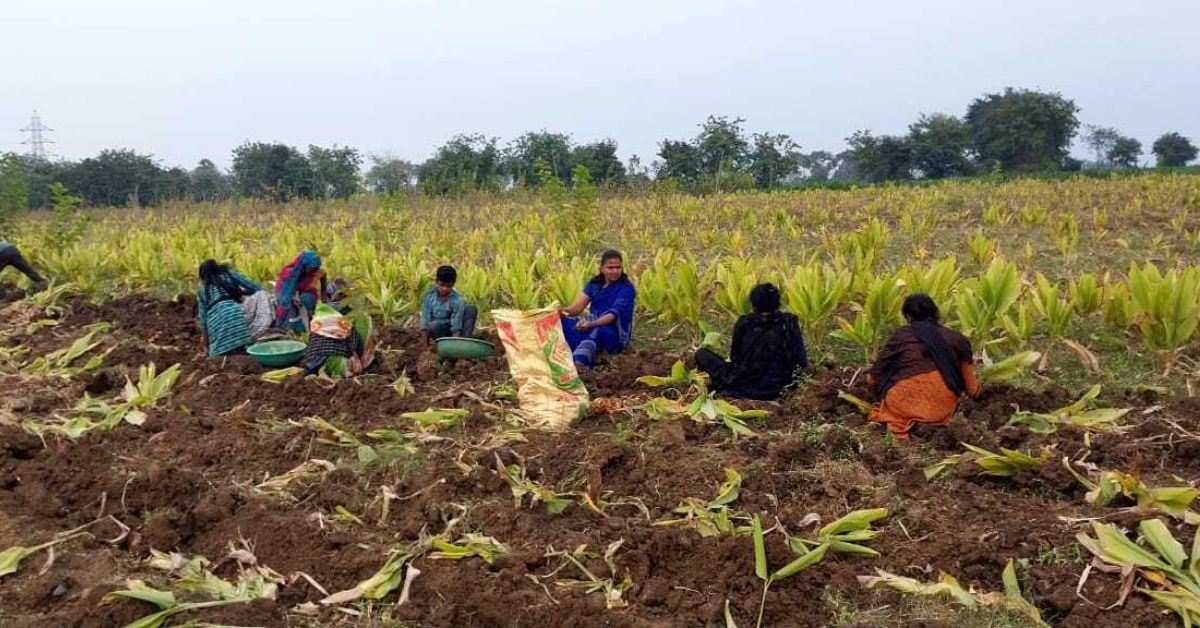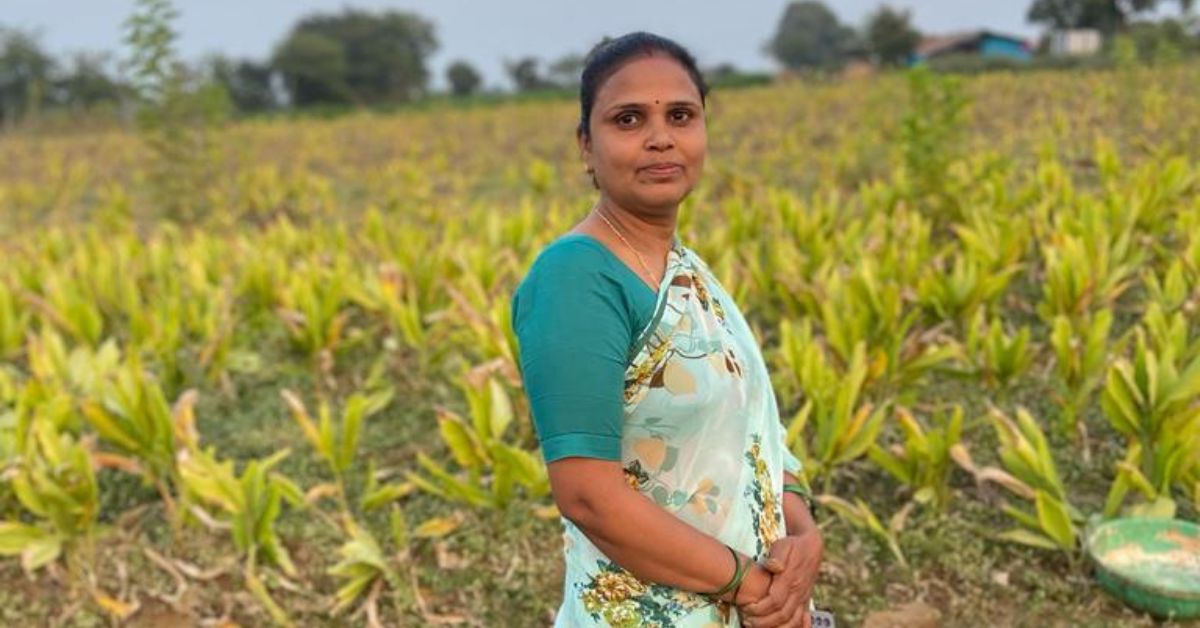Located on the bank of the Narmada river, Narmadapuram in Madhya Pradesh is famous for its fertile black soil that yields high-quality wheat. In fact, the place is said to be competing with the entire state of Punjab for wheat production. With good canal irrigation facilities, the farmers, however, also cultivate crops of soybean, sugarcane, gram, and paddy.
Trying something new, a progressive farmer Kanchan Verma ventured into turmeric farming in the division. “Although I did not face any losses cultivating traditional crops, I wanted to explore new crops for better returns. As a farmer, we should keep experimenting in the field,” she tells The Better India.
“By cultivating traditional crops, we were able to earn Rs 1.5 lakh in an acre. Whereas, we have doubled our income to Rs 3 lakh by growing turmeric,” adds Kanchan, who lives in Somalwada Khurd village.
Last year, Kanchan got a bountiful harvest of 400 quintals, earning an income of Rs 12 lakh. We sat down with the farmer to learn how she was able to reap huge profits by switching to turmeric cultivation.

Old field, new crop, huge success
Coming from an agricultural background, Kanchan turned to farming soon after her marriage. Alongside cultivating vegetables, wheat, and maize, the BA graduate sowed turmeric for the first time in 2020.
“Once, I saw a programme on television that showcased the advantages of taking up turmeric farming. To learn more about it, I went to the nearby KVK (Krishi Vigyan Kendra) and undertook a training programme of seven days,” she shares.
Kanchan opted for the Sangli variety of turmeric which has high curcumin turmeric and is often used for medicinal purposes. In addition to its deep-orange colour and rich aroma, Kanchan says, this variety produces big roots compared to other indigenous varieties.
She procured eight quintals of kachhi haldi (seed) from KVK at Rs 40 per kg. “Thereafter, we started tilling the farmland to remove weeds and reduce the soil compaction [relieve the tightness of soil], and level the soil. After seedbed preparation, we added four trolleys (1 trolley comprises 40 quintals) of cow dung in the soil. We then sowed germinated kachhi haldi in the beds. The process is similar to sowing any tuber crop like potatoes,” she informs.

In turmeric farming, the soil is usually mounded around the base of a plant to get large rhizomes. At first, Kanchan says she did not know the right time to earth up the plant. She later learned that it was done a month after planting the crop.
While the sowing period is between June and July, the crop is ready for harvest by February-end. She points out that it is very important to keep in mind the kind of soil used for cultivation. “Our region is famous for black soil that is suitable for wheat cultivation. However, a well-drained sandy loam soil rich in humus content works well for growing turmeric,” she informs.
“Also, black soil is soft when wet but forms hard blocks when it gets dry. So, we need a sandy loamy solid that is well-drained. In our district, only a few blocks including our Kesla block have such soil,” she adds.
Talking about the fertilisers and pesticides required for boosting turmeric growth, she says, “We only use cow dung and jeevamrut (liquid organic manure) to boost the fertility of the soil. Besides, as turmeric in itself is antiseptic and herbal, there are fewer chances of pest attack. Even if pests attack the crop, we use Trichoderma biopesticides to control the attack,” she says.
As she wanted to be careful of growing a new crop, Kanchan sowed and used only an acre of land to sow eight quintals of turmeric root. After eight months, she harvested bumper produce of 100 quintals.

Processing raw turmeric for good returns
After harvesting the rhizomes, Kanchan processes the entire produce to sell it in powdered form. “Once we wash the roots, we boil them in water and dry them completely under the sunlight. Thereafter, we peel the roots and grind them. It takes about 15 days to process the kachhi haldi (raw turmeric) into powder,” she says.
“In a batch of 100 quintals, only 20 quintals are left after processing. But this step is extremely advantageous as powder turmeric gets higher returns,” she adds.
Last year, Kanchan earned Rs 3 lakh against the input costs of Rs 50,000. Currently, she has expanded turmeric cultivation on 10 acres of land. “This season, we expect an income of Rs 30 lakh,” she says with pride.
Interestingly, Kanchan makes 1 kg packets of powdered turmeric and sells entire produce on the farm itself. “We do not need to go to the local market as we have earned great demand at the local level. By the time any outside customer reaches us, we have usually sold all our produce. Also, we sell our organic turmeric at Rs 150 per kg compared to Rs 240 per kg in the local market. We do not have any issue lowering the price as our cost of production becomes less with organic methods,” she says.
Kanchan claims she is the first such farmer to practice turmeric farming in this region.
“Local farmers here were reluctant to grow turmeric as it has a longer growing season but they ignored the fact that it gives definitive and huge returns. Other than being able to earn double income, it gives me immense contentment that I grow the produce organically. The more we minimise the use of chemical pesticides, the more toxin-free food will be there for our kids to eat,” she shares.
Edited by Pranita Bhat. All photos: Kanchan Verma.
No comments:
Post a Comment